Essential Insights and Industry Implications of ANVISA’s New Regulatory Framework
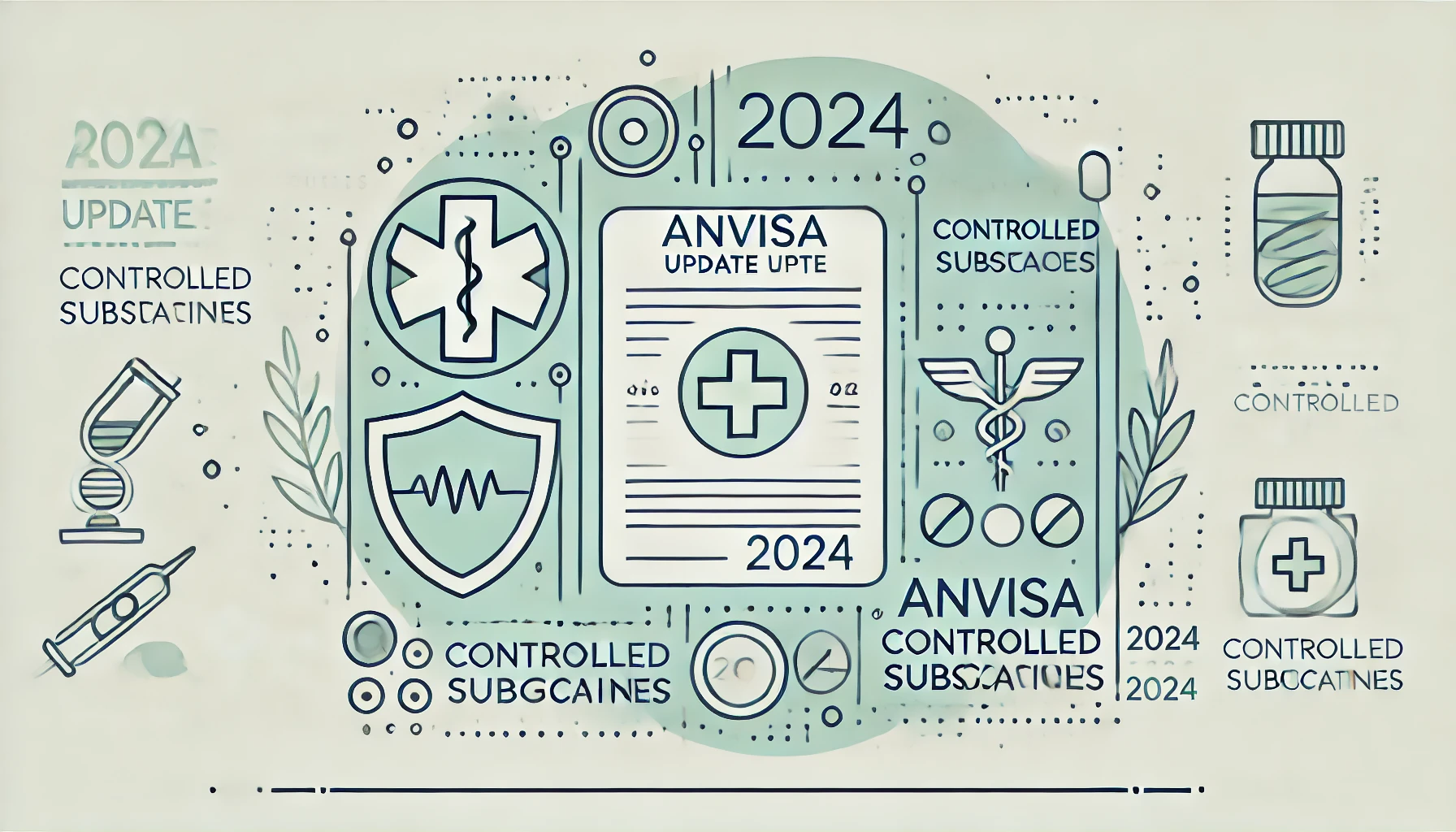
Regulatory Directive and Legal Foundations in the 2024 ANVISA Controlled Substance Update
The ANVISA Controlled Substance Update 2024 reinforces ANVISA’s commitment to public health protection through vigilant oversight of substances that may lead to misuse. Grounded in Brazilian legislative framework, specifically Law No. 9,782 of 1999 and Law No. 11,343 of 2006, this regulation grants ANVISA the authority to continually update its lists of controlled substances in response to new public health data or evolving substance abuse patterns. These laws emphasize ANVISA’s dual role in protecting the public from health risks while also ensuring that companies can operate within clearly defined regulatory boundaries. This includes:
- Public Health Focus: ANVISA is empowered to protect citizens from potential health risks associated with substances that have psychoactive, narcotic, or addictive properties. This mandate allows the agency to impose restrictions, prescribe handling requirements, and enforce strict documentation to track the distribution of these substances.
- Industry Legal Compliance: By updating controlled substance lists, ANVISA aligns industry practices with national health goals, ensuring that pharmaceutical companies can legally manufacture, distribute, and sell products within defined safety protocols. This ensures that the industry operates transparently and responsibly while minimizing public health risks associated with substance misuse.
Schedule a consultation today to discuss how we can support your market entry.

Changes and Additions to Controlled Substances (Anexo I)
List A1: Narcotics
The ANVISA Controlled Substance Update expands Anexo I with additional classifications for widely used opioids and their derivatives. Detailed Breakdown of Changes: The expanded List A1 of narcotics introduces a comprehensive inclusion of widely used opioids, providing specific classifications to encompass not just the core substance but also its various forms. Examples include:
- Buprenorphine: Often used in treating opioid dependence, Buprenorphine is now subject to strict tracking and usage limitations. All variants, including salts, esters, and isomers, are classified as controlled.
- Fentanyl and Fentanyl analogs: This potent opioid and its derivatives, often found in various medical formulations, now require stringent tracking to prevent diversion into illicit markets. This includes specific esters or salts, like Fentanyl citrate.
- Tapentadol: Used for pain management, particularly in severe cases, now faces restrictions due to its potential for dependency.
Implications for Industry:
- Pharmaceutical Companies: Companies that manufacture, distribute, or sell opioids listed under List A1 must adhere to enhanced security measures. These include detailed prescription protocols, drug tracking systems, and storage requirements. Every prescription must be documented, and usage records are to be retained for at least five years. Prescriptions must be individualized and cannot be refilled automatically.
- Retention Requirements: For high-risk narcotics, prescriptions require a special retention protocol, where all dispensing data must be logged digitally and reported monthly to ANVISA. Companies are also required to maintain secure storage with restricted access to minimize the risk of diversion.
- Medical Training and Documentation: Health professionals, including doctors, pharmacists, and dispensaries, require updated training to handle these narcotics compliantly. For example, new training protocols could focus on understanding the risks associated with synthetic opioid derivatives like Fentanyl. Healthcare providers must learn precise dosing, potential interactions, and the legal obligations tied to these substances.
List A2: Narcotics for Restricted Use
List A2 focuses on narcotics that are controlled but allowed under specific conditions, often due to their lower potency or more limited use. Examples of substances now covered under A2 include:
- Codeine: Restricted based on concentration limits. For instance, low-dose codeine formulations (10 mg or lower) might be available with fewer restrictions, but higher doses require full prescription control.
- Tramadol: Usage is restricted, particularly when exceeding 50 mg per dose, and must be dispensed under strict prescription guidelines. Tramadol-based painkillers used for chronic pain are now categorized, ensuring they’re used under medical supervision only.
Implications for Industry:
- OTC Restrictions: OTC products containing substances like Codeine will either need to be reformulated to meet lower concentration limits (e.g., Codeine dosages not exceeding 10 mg per dose for minor usage) or face reclassification to prescription-only status. Brands known for cough syrups with codeine will need to adjust their formulas to comply with these new limitations or restrict sales to controlled environments.
- Pharmaceutical Research and Development (R&D): For compounds like Tramadol and other narcotic-based treatments, R&D in the pharmaceutical sector will likely face tightened protocols. This includes meeting compliance for dosages, storage, and usage limits. Strict tracking systems are mandatory, and development around these compounds must consider alternative formulations or non-opioid pain management solutions, especially for markets where prescription controls are strict. Pharmaceutical companies may also need to conduct risk assessments and invest in tracking technology to document each stage of production and distribution.
Schedule a consultation today to discuss how we can support your market entry.
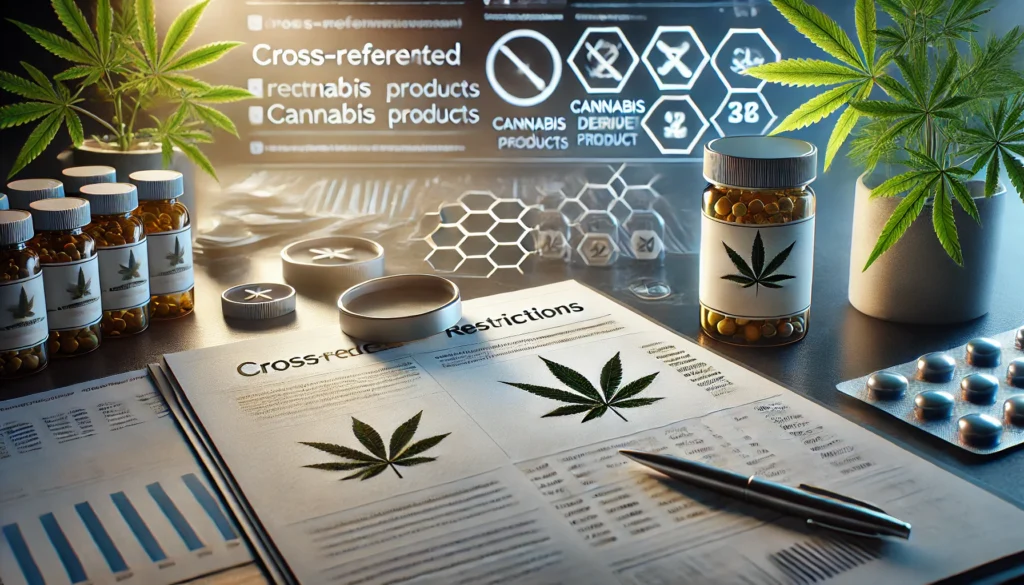
Cross-Referenced Restrictions on Cannabis-Derived Products
A notable aspect of the ANVISA Controlled Substance Update is the restriction on products exceeding 0.2% THC. Obtaining these products now requires a specialized prescription, which must include a detailed medical justification by authorized professionals. This update presents specific compliance challenges for pharmaceutical and natural products companies, as they must ensure THC levels remain within permitted thresholds or implement additional safety and documentation protocols.
Expanded Cannabis Controls:
- Products with THC levels exceeding 0.2% are now under stringent regulatory control. To obtain these products, patients must follow a specific prescription process:
- Medical Justification: Physicians are required to provide written medical justification for THC-containing products. This justification must include details on why alternatives (such as pure CBD products or lower THC levels) are not suitable.
- Specialized Prescription: Only specialists in areas like neurology or palliative care are authorized to prescribe high-THC products, given their understanding of the therapeutic requirements and potential risks associated with such formulations.
- Prescription Protocol: The prescription itself must outline the concentration, dosage, and duration of treatment. Once issued, the prescription must be retained by the pharmacy, and usage data sent to ANVISA monthly.
Implications for Industry:
- Pharmaceuticals and Natural Products: Companies developing cannabis-derived treatments need to carefully monitor the THC concentration in their formulations to remain compliant. Products with over 0.2% THC are classified as controlled, necessitating additional labeling and requiring both prescriber and distributor to retain detailed records of each dispensation.
- Veterinary Medicine: Cannabis-based veterinary treatments that exceed the 0.2% THC threshold also require specific authorization. Veterinary providers must justify any use of higher-THC cannabis products in animal treatment plans, specifying the purpose, expected outcomes, and safety protocols.
Schedule a consultation today to discuss how we can support your market entry.
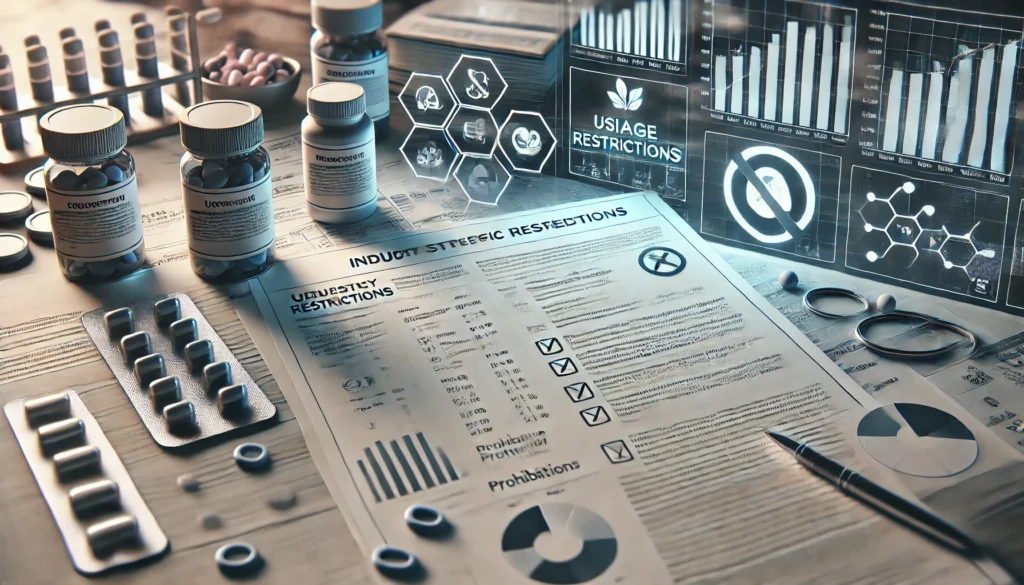
Industry-Specific Addenda and Usage Restrictions under the 2024 ANVISA Controlled Substance Update
The Industry-Specific Addenda and Usage Restrictions introduced by the 2024 ANVISA Controlled Substance Update impose targeted regulations on sectors such as veterinary medicine and industrial manufacturing, reflecting the need for sector-tailored compliance. For example, in veterinary practices, ANVISA has placed strict limitations on the use of psychoactive substances and other controlled compounds, such as THC derivatives for animal treatments, to ensure that only medically justified applications are permitted. Similarly, certain industrial chemicals used in non-medical processes are exempt from pharmaceutical restrictions when their usage is appropriately documented, but the need for clear, specific documentation is emphasized to prevent reclassification. These nuanced updates demonstrate ANVISA’s commitment to balancing public health protections with the unique requirements of each industry, mandating clear compliance protocols that safeguard against misuse while allowing legitimate, industry-specific applications to continue responsibly.
Veterinary Regulations
The addenda specifically address the use of certain controlled substances in veterinary medicine, prioritizing animal welfare and ethical usage.
- Prohibitions on Non-Medical Use: Substances like cloreto de metileno and other psychoactive compounds are now restricted for non-medical applications in veterinary contexts. This ensures these chemicals are not misused in animal care settings, mandating clear therapeutic justifications and oversight by qualified veterinarians.
Implications for Veterinary Industry:
- Compliance Requirements: Veterinary pharmacies and practices must comply with dual-level restrictions that align with both human and veterinary guidelines. This includes restrictions on THC derivatives in animal treatment, where veterinary products must meet specific thresholds or face prohibition.
- Tracking and Documentation: Veterinary providers are now responsible for detailed tracking of controlled substance use in animal care, ensuring accountability and allowing authorities to monitor potential misuse.
Industrial Use Exceptions
Industrial compounds, such as 3-CMC (a synthetic derivative sometimes used in industrial production), receive exceptions when used strictly within an industrial context.
- Non-Medical Applications: Such substances are generally exempt from stringent pharmaceutical controls if properly documented as part of non-medical, industrial applications, like manufacturing or chemical processing.
Implications for Industry:
- Industrial Compliance: Industrial entities utilizing these chemicals must keep thorough documentation to avoid reclassification risks, particularly if any compound could theoretically cross into psychoactive substance definitions. Proper labeling, secure storage, and clear purpose documentation are essential.
Schedule a consultation today to discuss how we can support your market entry.
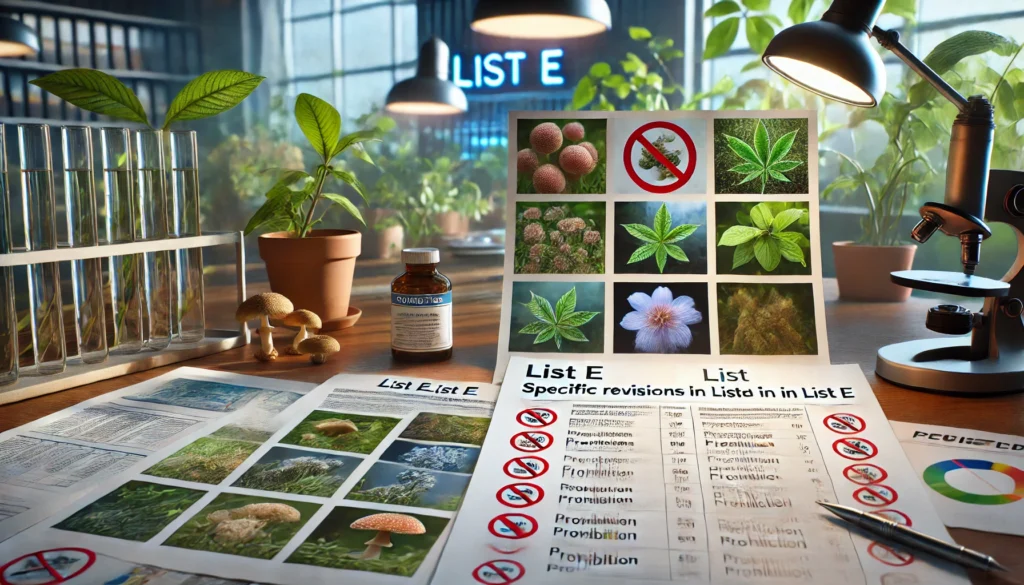
Specific Revisions in List E: Proscribed Plants and Fungi
Prohibition and Limited Access for Research
List E includes strict prohibitions on plants known for their narcotic properties, such as Cannabis sativa and Papaver somniferum (the opium poppy), limiting their availability outside highly controlled research contexts.
- Permit Requirements for Research: Institutions wishing to study or cultivate these plants need special authorization from ANVISA, which restricts the scope of research projects in agronomy, phytotherapy, and medicine.
Implications for Research and Agriculture:
- Research Adjustments: Universities and research institutions face a lengthy approval process and heightened oversight when working with proscribed plants, which could hinder new studies in fields such as botany, agronomy, and medical research related to pain management.
- Agriculture and Industrial Use: For cultivators, growing only non-narcotic varieties of these plants presents challenges. Industrial hemp farmers, for example, must ensure THC levels in Cannabis sativa stay below permissible levels, complicating the supply chain and potentially increasing costs due to compliance requirements.
Schedule a consultation today to discuss how we can support your market entry.
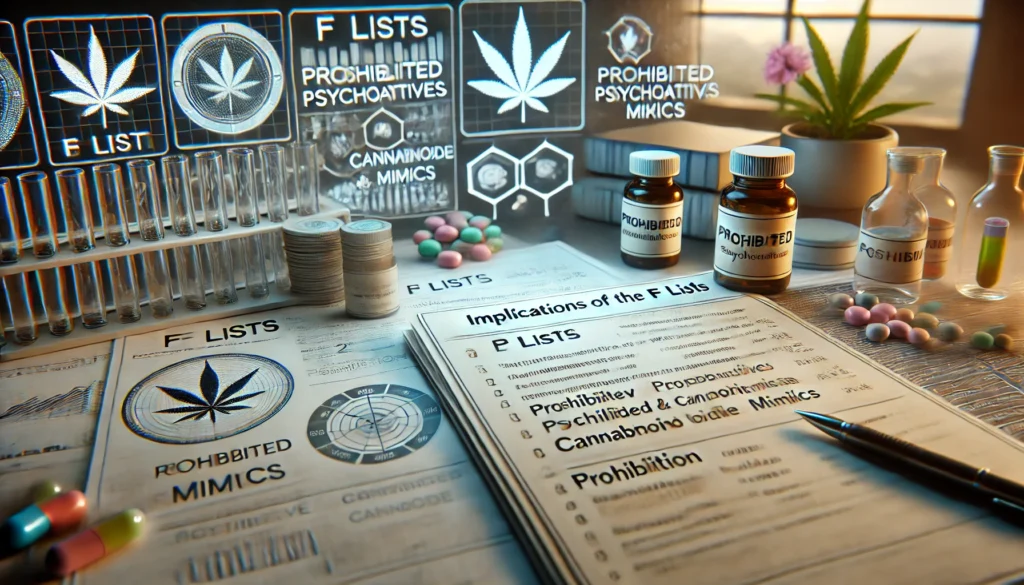
Implications of the F Lists (Prohibited Psychoactives and Cannabinoid Mimics)
Class-Specific Prohibitions
New classes under F1 (Narcotics) and F2 (Psychoactives) encompass a variety of synthetic and designer drugs, targeting substances like MDMA, LSD variants, and synthetic cannabinoid mimetics to curb misuse and illicit trade.
Implications for Industry:
- Healthcare Compliance: Hospitals and clinics handling F1 and F2 classified substances must implement enhanced security measures, including special disposal protocols and segregated storage to minimize diversion risks.
- Pharmaceutical R&D: Companies involved in drug development will need to explore alternatives to these prohibited psychoactives. This could drive research into non-restricted compounds or less psychoactive formulations, presenting both a challenge and an opportunity for innovation in pain management or mental health treatment options.
Consumer Education
The update introduces a need for public awareness campaigns to inform citizens about these new restrictions and reduce accidental or recreational misuse of psychoactives, especially for substances known to be diverted for recreational use.
Schedule a consultation today to discuss how we can support your market entry.

Economic and Logistical Considerations in the 2024 ANVISA Controlled Substance Update
The 2024 ANVISA Controlled Substance Update introduces a range of economic and logistical requirements that industries must address to remain compliant. This new framework demands careful attention from companies involved in the manufacturing, distribution, and import/export of controlled substances, as tighter regulations now impact supply chain operations, inventory management, and international trade. One notable change is the allowance for limited authorization exemptions on specific psychoactive substances for import or export, provided these substances remain under designated quantity thresholds. This regulatory adjustment, though aimed at reducing red tape, brings new responsibilities in customs compliance and meticulous documentation. The economic impact of these measures is particularly significant for small and medium enterprises (SMEs), which may face increased costs associated with compliance, regulatory reporting, and storage requirements.
Supply Chain and Import/Export Regulations
To streamline legal trade, ANVISA allows limited quantities of specific psychoactive substances to be imported or exported with fewer bureaucratic obstacles.
- Authorization Exemptions: For psychoactives that meet specific thresholds, such as 500 mg or less, companies may bypass more intensive permit requirements. This allowance supports streamlined trade but requires meticulous record-keeping to ensure quantities align with regulatory limits.
Implications for Trade and Logistics:
- Customs and Import Compliance: Companies exporting or importing controlled substances must align with customs regulations in both origin and destination countries. Missteps can lead to delays, fines, or the revocation of trading privileges.
- Economic Adjustments for SMEs: For small and medium-sized enterprises (SMEs), compliance costs may rise, potentially necessitating changes in operational structures, logistics planning, and budget allocations for legal consulting or documentation processes.
Schedule a consultation today to discuss how we can support your market entry.

Comprehensive Compliance and Monitoring
ANVISA’s directive requires a heightened focus on tracking, documentation, and monitoring across industries handling controlled substances.
Medical Institutions and Pharmacies
Hospitals, clinics, and pharmacies must adopt stricter protocols to meet regulatory demands:
- Prescription Monitoring: Every controlled prescription must be individually tracked, with usage data reported back to ANVISA. Pharmacies are required to utilize digital systems that log each prescription filled and notify authorities of inventory levels.
- Inventory Management: Medical institutions must maintain accurate records of stock levels, usage, and disposal, ensuring data aligns with digital monitoring systems specified by ANVISA.
Data Reporting
Pharmacies, hospitals, and other handlers of controlled substances are now required to maintain a consistent reporting cadence, supplying detailed data logs to ANVISA to facilitate real-time monitoring and ensure adherence to supply limits.
Schedule a consultation today to discuss how we can support your market entry.

Conclusion: Navigating the 2024 ANVISA Controlled Substance Update
The 2024 ANVISA resolution represents a transformative update to Brazil’s controlled substance framework. These revisions reflect a commitment to aligning Brazil’s standards with international practices, balancing stringent public health measures with allowances for legitimate industrial, medical, and research purposes.
For pharmaceuticals, biotechnology, agriculture, veterinary medicine, and other sectors, the resolution brings layered compliance responsibilities, ranging from advanced documentation to rigorous tracking and digital reporting. This regulatory shift underscores a proactive stance on public safety, pushing industries toward greater transparency, accountability, and adaptability.
Hegemoni Regulatory & Business Solutions is prepared to assist your business in navigating Brazil’s evolving compliance landscape. We offer tailored solutions in regulatory strategy, compliance, and market entry support. Contact us today to ensure that your products align with Brazil’s pharmaceutical standards and meet global quality benchmarks.
Schedule a consultation today to discuss how we can support your market entry.
